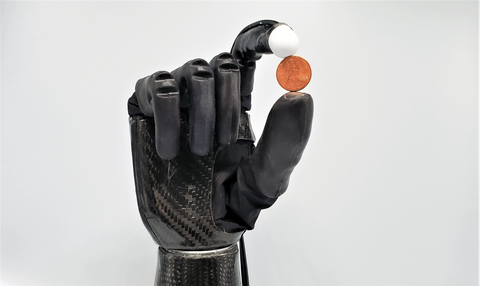Apr 03, 2024
New high-resolution tactile sensor can be used to detect prostate cancer
In collaboration with Meta (Stanford University), the TU Dresden and the National Center for Tumor Diseases (NCT/UCC) Dresden, a research paper was produced that presents the use of touch sensors in the early detection of prostate cancer.
Vision-based tactile sensors now enable robotic hands to feel tactile perceptions. To do this, they must achieve the strength and spatial resolution of human fingertips. For use in restricted environments, their "fingertip sensitivity" must work on very small surfaces and enable manipulations that cannot be performed by larger fingers.
One potentially life-saving example is the detection of cancer by palpating internal cavities during remote-controlled or teleoperated examinations. Prostate cancer in particular is the fifth most common cause of cancer death in men worldwide, but can be detected early through regular screening. Previous rectal examinations, in which the prostate area is palpated with a gloved finger through the rectum, depend on the examiner's experience and are often subjective. In contrast, care robots equipped with slim and sensitive fingertips could take objective and quantitative measurements, compare and make precise diagnoses.
The paper presents a novel approach for miniaturizing image processing-based tactile sensors using fiber bundles as optical lines, which are smaller than an average human fingertip at 15 mm in diameter. The design was developed to match the geometry of the human fingertip. The electronics and camera are in a remote location, further reducing the size of the housing.
Prof. Roberto Calandra, Chair of Explainable Artificial Intelligence at the Faculty of Computer Science and Head of the Learning, Adaptive Systems and Robotics Lab at TU Dresden, sees great potential in this work: "We are creating highly sensitive robotic hands that can precisely feel, measure and evaluate tissue in environments that large human fingers cannot reach. The objective evaluation of the data enables precise diagnostics."

